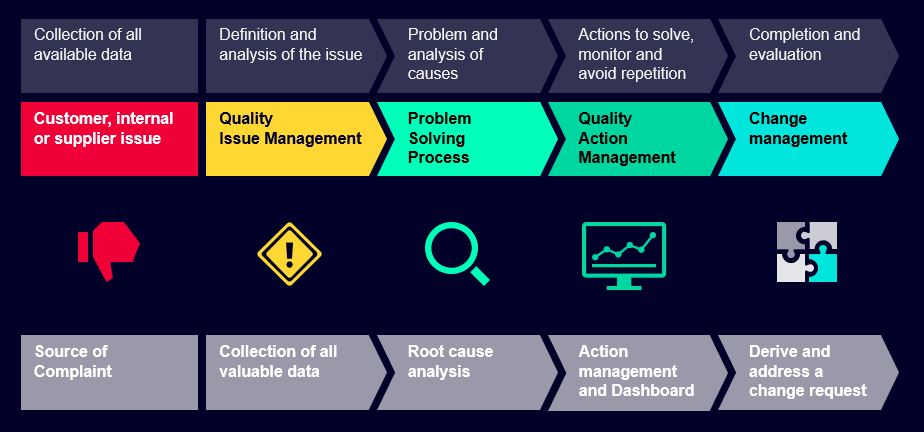Optimize the complaint management process

Optimizing the complaint management process will always be an important component of manufacturing quality programs because of one unavoidable truth: problems and defects will occur. No matter how robust your quality planning phase and how hard you try to evaluate all possible failures, unexpected problems and defects might occur.
Of course, this does not mean that your quality planning efforts are all for naught. Indeed, using today’s digital tools in a robust quality management system (QMS) is fundamental. These tools enable you to reduce product and operating costs while improving quality. They also enable rapid response when quality issues occur.
The need to optimize the complaint management process comes into play when an unexpected issue arises that compromises your product quality. Of course, quality issue management is critical because making the wrong decisions can have a devastating impact on your business. In the worst cases, quality issues result in costly recalls – not to mention the damage to your reputation that comes with them. Even when a recall is not triggered, quality issues create immediate costs of rework and scrap, lower yields and smaller margins. Further, they may prompt problems, and the more complaints or the longer they remain unresolved, the greater the corrosive effect on customer satisfaction and retention.
Complaint management and problem-solving follow a systematic approach
The key is to find a solution and put measures in place to keep the problem from recurring. Reacting fast is important, but only if you deeply analyze root causes and implement measures to correct those can you expect to truly solve the problem and avoid reoccurrence – and even improve the quality of the product itself.
Though they may go by different names, best practices for managing your complaint response are provided by industry organizations and regulatory bodies in nearly every industry. Most of these guidelines are founded on the ISO 9000 standards promulgated by the International Organization for Standardization (ISO). Many of them recommend a process based on the eight disciplines (8D) methodology or something similar. As a problem-solving process in quality, 8D comprises eight steps designed to address manufacturing non-conformances and implement continuous improvement.
Manufacturers must demonstrate that their quality procedures are aligned with best practices and that their processes are capable and stable, especially when they are subjected to third party system audits or customer audit.
Problem-solving tools in quality centralize defect management
Design, manufacturing, and quality teams must all be engaged to optimize complaint management in a way that supports continuous quality improvement. It is important that all these teams share the same views about the needed information and problem-solving approach you employ.
The purpose of using these standardized approaches is to enable the quality team to react immediately to discover root cause and implement all corrective and preventive actions, with the result that the problem is solved and reoccurrence is avoided.
To optimize complaint management process, here are a couple of key principles to consider:
Use a consistent process. As soon as a complaint arises, the first step is to identify the type of complaint, whether it is an internal or production complaint, customer or supplier complaint, or a freely definable complaint source and identify the specific nonconformity that led to the complaint. Next, for consistency your process should use a specific quality tool for problem solving (such as 8D, Ishikawa or 5Whys) to analyze the issue and to define the root causes.
Integrate the quality issue and problem solving with change management process flow. All the tasks in the complaint management and problem-solving process may result in change requests for engineering or manufacturing. Each change needs to be managed and documented. Integrating the quality issue management and change management processes is fundamental to avoid costly delays and to keep changes as uncomplicated as possible by implementing them as early as possible.

A holistic problem-solving strategy accelerates continuous quality improvement.
The core team, including representatives of design, manufacturing, quality and other domains, requires visibility and access to the same information. If your team still has difficulty getting the information they need, the Teamcenter Quality solution can help.
Teamcenter Quality is part of the Xcelerator portfolio, the comprehensive and integrated portfolio of software and services from Siemens Digital Industries Software.
Teamcenter Quality gives you root cause analysis methods with corrective and preventive actions in hand, as well as the ability to monitor all quality activities centrally, reducing the total cost of quality within your company.
Discover more about continuous quality improvement with Teamcenter Quality.
Watch our WEBINAR – Boost your problem-solving process strategies to learn how a holistic closed-loop quality approach helps to boost your complaint management process and improve customer satisfaction.


